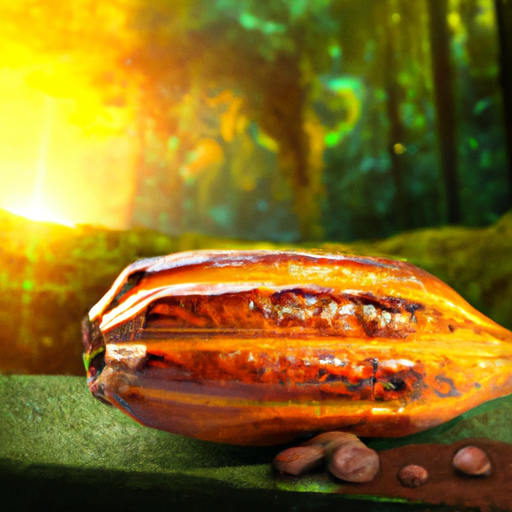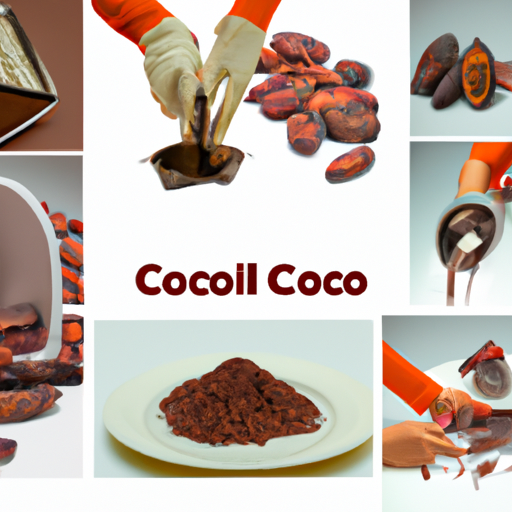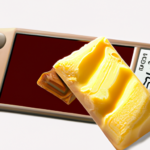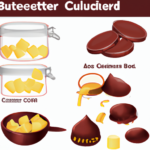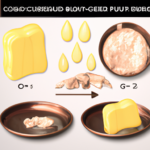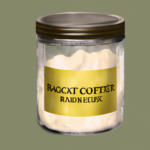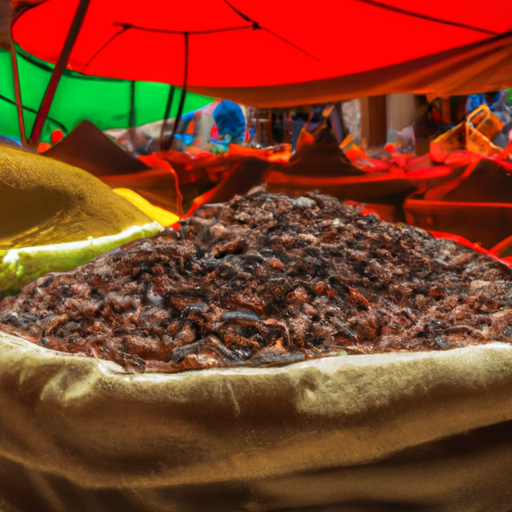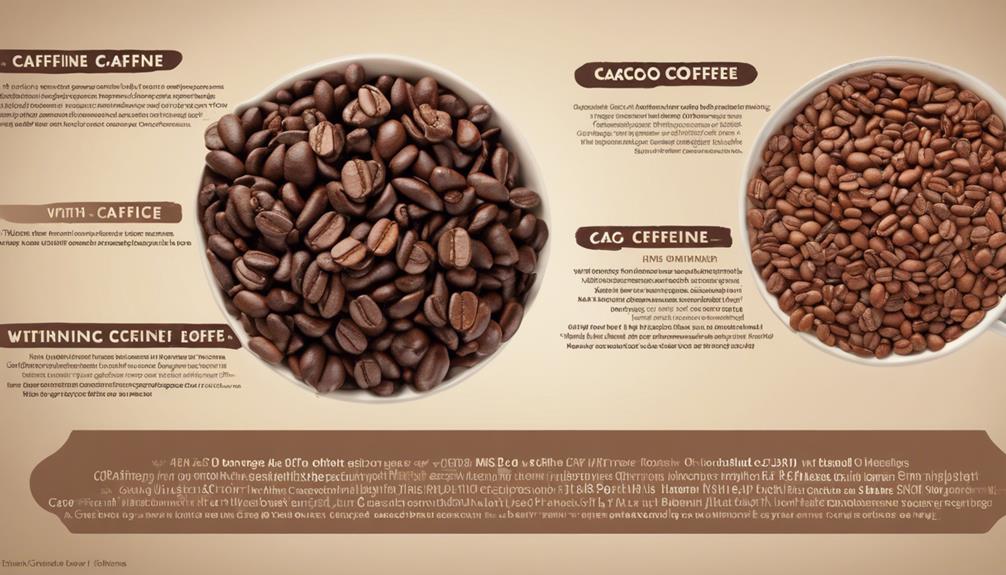Have you ever heard that **cacao butter** is a crucial element in numerous raw food recipes? Yes, it’s indeed a fact! Being a devoted supporter of the raw food trend, I have grown to admire the special qualities of **cacao butter** and how it can be used to whip up scrumptious and wholesome meals. Curious to learn more about this remarkable ingredient and how it can elevate your culinary creations? Keep reading to discover the magic of **cacao butter**!
However, one question that often arises is: what temperature should cacao butter melt to still be considered raw?
In this article, I will delve into the science behind cacao butter and explore the ideal melting point to maintain its raw qualities. By understanding the importance of temperature control and implementing proper techniques, we can ensure that our melted cacao butter remains raw and retains its beneficial properties.
Join me as we uncover the secrets to working with raw cacao butter and discover exciting recipes along the way. Get ready to elevate your raw food game to a whole new level!
Key Takeaways
- The recommended temperature for melting cacao butter to maintain its raw qualities is between 45-50°C (113-122°F).
- Melting cacao butter at high temperatures diminishes its raw qualities and nutritional value.
- Alternative methods such as using a double boiler or gentle heating at low temperatures should be used for melting cacao butter.
- Proper tempering of cacao butter ensures the desired texture and appearance while retaining its nutritional benefits.
Understanding the Raw Food Movement
The raw food movement emphasizes the importance of consuming unprocessed and uncooked foods. Understanding the raw food benefits is key to fully embracing this lifestyle.
Raw food enthusiasts claim that eating raw foods can lead to increased energy levels, improved digestion, and enhanced overall health. They argue that cooking can destroy essential nutrients and enzymes present in food, which are important for optimal health.
However, there are controversies surrounding the raw food movement. Critics argue that some raw food diets can be nutritionally deficient and may not provide all the necessary nutrients for a balanced diet. It is important to consider these arguments and make informed choices when adopting a raw food lifestyle.
Now, let’s explore the properties of cacao butter and its role in the raw food movement.
Exploring the Properties of Cacao Butter
Cacao butter has a rich nutritional profile, making it a valuable ingredient in various culinary and cosmetic applications. It is packed with healthy fats, including oleic acid, which is known for its heart-healthy benefits.
Cacao butter is extracted from the cacao bean through a meticulous process that involves fermentation, drying, and pressing, ensuring the preservation of its natural properties.
Nutritional Profile of Cacao Butter
Indulge in the rich nutritional profile of cacao butter as you discover its melt-in-your-mouth goodness while still keeping it raw. Cacao butter offers a plethora of nutritional benefits that can have positive health implications.
Here are some key elements of its nutritional profile:
-
Antioxidants: Cacao butter is packed with antioxidants, such as flavonoids, which help protect the body against free radicals and reduce oxidative stress.
-
Healthy Fats: With a high content of monounsaturated and polyunsaturated fats, cacao butter can contribute to a balanced diet and support heart health.
-
Vitamins and Minerals: Cacao butter contains essential vitamins and minerals like vitamin E, magnesium, and iron, which are crucial for overall well-being.
-
Fiber: Despite its creamy texture, cacao butter also contains dietary fiber, promoting digestive health and aiding in weight management.
Transitioning into the subsequent section about extraction and processing methods, it is important to understand how these methods may affect the nutritional composition of cacao butter.
Extraction and Processing Methods
Savor the rich nutritional benefits of cacao butter as it undergoes extraction and processing methods that enhance its health-promoting properties.
Extraction methods play a crucial role in obtaining the highest quality cacao butter. The most common method is hydraulic pressing, where the cacao nibs are ground and then squeezed under high pressure to separate the butter from the solids. This process ensures that the butter retains its natural properties and essential nutrients.
Another extraction method is the cold-pressing technique, where the cacao beans are ground at low temperatures to preserve the delicate flavors and nutrients.
After extraction, cacao butter goes through various processing techniques, including filtration and deodorization, to remove impurities and enhance its shelf life. These methods help maintain the integrity of the butter while ensuring its optimal quality and taste.
Moving forward, let’s explore the concept of raw cacao butter and its ideal melting temperature.
The Concept of Raw Cacao Butter
The concept of raw cacao butter is fascinating because it retains its nutritional properties even when melted at a temperature below 118 degrees Fahrenheit. Unlike other fats, which lose their beneficial components when heated, raw cacao butter remains a powerhouse of antioxidants, vitamins, and minerals.
This makes it a highly sought-after ingredient in the health food industry. Raw cacao butter provides numerous benefits for the body, such as improving heart health and boosting brain function. Additionally, it adds a rich and creamy texture to various culinary creations.
For those seeking alternatives to raw cacao butter, options like coconut oil or avocado oil can be used. However, they may not offer the exact same nutritional profile.
Moving on to the melting points of cacao butter…
Melting Points of Cacao Butter
Prepare to be amazed as you witness the magical transformation of cacao butter into a velvety, luscious liquid with a melting point that will leave you in awe.
When it comes to raw cacao butter, the melting point is a crucial factor to consider in order to maintain its rawness. The ideal temperature for melting cacao butter while still preserving its raw qualities is around 104°F to 113°F (40°C to 45°C).
This temperature range ensures that the cacao butter melts smoothly without exceeding the threshold for rawness. By staying within this range, you can unlock the full potential of cacao butter in your raw cacao recipes, allowing it to blend seamlessly with other ingredients and create decadent treats.
Now, let’s delve into the various techniques for melting cacao butter.
Techniques for Melting Cacao Butter
Are you ready to discover the best techniques to transform cacao butter into a velvety, luscious liquid? Melting cacao butter requires specific techniques to ensure it retains its raw qualities. Here are three essential melting techniques to achieve the perfect texture and consistency:
-
Double boiler method: Place cacao butter in a heatproof bowl and set it over a pot of simmering water. Stir gently until melted, ensuring the temperature stays within the range of 104°F to 113°F (40°C to 45°C).
-
Microwave method: Cut cacao butter into small pieces and place them in a microwave-safe bowl. Heat in short bursts, stirring in between until fully melted. Be cautious not to exceed the temperature range mentioned earlier.
-
Dehydrator method: Spread cacao butter in a thin layer on a dehydrator tray. Set the dehydrator to a low temperature, around 113°F (45°C), and let it melt slowly over several hours.
By mastering these melting techniques, you can maintain the raw qualities of melted cacao butter.
Now, let’s explore how to keep its nutritional benefits intact.
Maintaining Raw Qualities in Melted Cacao Butter
When it comes to maintaining the raw qualities of melted cacao butter, temperature control is crucial. To preserve the nutritional benefits and delicate flavors of raw cacao butter, it should be melted at a low temperature. The ideal temperature range for melting cacao butter while still keeping it raw is between 104°F (40°C) and 118°F (48°C).
Going beyond this range can lead to the loss of important enzymes and antioxidants present in raw cacao butter. It is important to note that using gentle melting techniques, such as a double boiler or a dehydrator set at a low temperature, can help maintain the raw qualities of cacao butter.
By carefully controlling the temperature during the melting process, you can ensure that the cacao butter remains in its raw state, preserving its nutritional value and rich flavors. Transitioning to the next section, let’s now explore some tips for effectively working with raw cacao butter.
Tips for Working with Raw Cacao Butter
Get ready to master the art of working with raw cacao butter with these helpful tips! When it comes to working with molds and maintaining the raw qualities of cacao butter, it is important to understand the tempering techniques. Tempering is the process of heating and cooling the cacao butter to specific temperatures in order to achieve the desired texture and appearance. To help you navigate this process, I have created a table below that outlines the recommended temperatures for various stages of tempering. By following these guidelines, you can ensure that your raw cacao butter retains its nutritional benefits and smooth consistency. Now that you have mastered the basics of working with raw cacao butter, let’s move on to exploring some delicious raw cacao butter recipes.
Raw Cacao Butter Recipes
Let’s now delve into some delectable recipes using raw cacao butter.
Raw cacao butter, known for its numerous benefits, is not only a delicious ingredient but also a great addition to skincare routines.
Rich in antioxidants, it helps combat free radicals, promoting healthy skin. Its high fatty acid content provides deep hydration and nourishment, leaving your skin soft and supple.
When it comes to recipes, raw cacao butter can be used in various ways. From decadent chocolate truffles to creamy hot chocolate, the possibilities are endless.
You can even incorporate it into homemade body butters and lip balms for a luxurious and moisturizing treat.
With its versatility and raw cacao butter’s skincare benefits, incorporating it into your recipes is a win-win.
Now, let’s move on to the conclusion and final thoughts on the topic.
Conclusion and Final Thoughts
In conclusion, incorporating raw cacao butter into your recipes adds a touch of indulgence and nourishment for your skin. It enhances flavor and texture while providing numerous benefits for your overall well-being. However, overheating cacao butter can diminish its raw qualities and nutritional value. To avoid this, alternative methods for melting cacao butter, such as using a double boiler or gentle heating at low temperatures, should be employed. By being cautious with the melting process, you can preserve the raw nature of cacao butter and fully experience its nourishing properties.
Frequently Asked Questions
Can cacao butter be considered raw if it is heated above a certain temperature?
Heating methods can affect whether cacao butter is still considered raw. However, alternative uses of cacao butter may tolerate higher temperatures. It is important to determine the specific temperature threshold for raw cacao butter.
How does the raw food movement define ‘raw’ when it comes to cacao butter?
Defining ‘raw’ in the raw food movement when it comes to cacao butter involves considering the impact of heat on its properties. It is crucial to understand the criteria for maintaining its raw status.
Are there any health benefits associated with consuming raw cacao butter?
Consuming raw cacao butter has numerous health benefits. It is rich in antioxidants, which can help reduce inflammation and protect against chronic diseases. Additionally, it contains healthy fats that promote heart health and improve brain function.
Can melted cacao butter still retain its nutritional properties?
Melted cacao butter may have reduced nutrient absorption compared to solid cacao butter due to changes in its structure. Heating can also decrease the antioxidant properties of cacao butter, potentially impacting its overall nutritional value.
What are some common techniques for melting cacao butter without compromising its raw qualities?
To maintain the raw qualities of cacao butter while melting it, various techniques can be employed. It is crucial to monitor the temperature closely and use gentle heat methods such as a double boiler or low-temperature dehydrator.
Does the Taste of Raw Cacao Butter Change Depending on the Temperature at Which It Melts?
Yes, the raw cacao butter taste can change depending on the temperature at which it melts. When melted at a higher temperature, the flavor may become stronger and more pronounced. At lower temperatures, the taste may be milder and more subtle. Temperature can definitely impact the overall flavor experience.
Conclusion
The temperature at which cacao butter should melt to still be considered raw is a matter of debate within the raw food movement. Some argue it should not exceed 118 degrees Fahrenheit, while others believe it can still be considered raw up to 120 degrees Fahrenheit.
However, it is important to note that the melting point of cacao butter is around 93 to 101 degrees Fahrenheit. Therefore, it is crucial to use precise techniques, such as low heat and gentle stirring, to maintain the raw qualities of melted cacao butter.
By following these tips, you can ensure that your raw cacao butter recipes are both delicious and nutritious.

